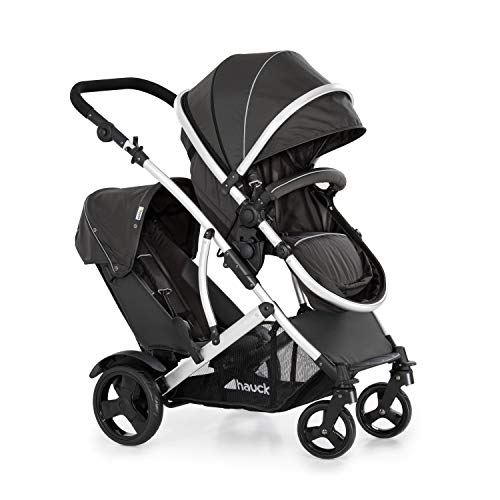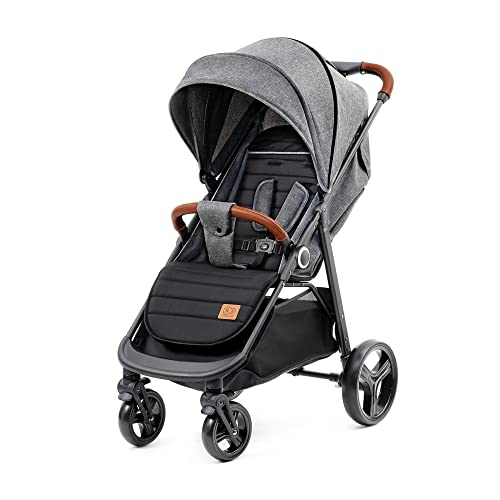What is a Pushchair best single pushchair?
A pushchair single is designed to carry a single child (although some are able to be used from birth using the use of a car seat or a carrycot). Some are light and transform into double.
 It is a popular choice for families due to its sleek, modern design and features, such as adjustable handles for height and a huge shopping basket. It also has machine-washable fabric and a footmuff that is an essential accessory for colder weather.
It is a popular choice for families due to its sleek, modern design and features, such as adjustable handles for height and a huge shopping basket. It also has machine-washable fabric and a footmuff that is an essential accessory for colder weather.
Convertible
If you’re looking for a single stroller that can adapt to your child’s needs look into a convertible model. This kind of stroller comes with a hammock seat that transforms into a carrycot, and it’s a comfortable choice for infants. It’s also lightweight and easy to fold.
The Larktale Crossover is a stroller/wagon that easily converts into a double-seater, without the need for any tools. It is a great option for parents as it comes with numerous features, including a large undercarriage in both modes and an organizer that hangs from the push bar. There are some disadvantages, such as the confusion of the zipper to attach the back of the seat 1 in wagon-mode, and the size of the cup holders.
 Brakes
Brakes
A good pushchair single will come with a couple of braking systems. One of them is the hand brake, which is typically a small lever on the rear of the frame that you can turn down to stop, then push it back up to begin the process again. This is extremely useful on urban terrain where you want to slow down quickly or on the pavements of shopping centers where you may have to wait for pedestrians. The front wheel brake is used on top-of-the-line pushchairs such as the phil&teds Dash or Bugaboo Cameleon 3. It is activated in the same manner as the brakes on bicycles. This is particularly useful when you are going over rough terrain or jogging because it stops the pushchair right away and ensures your child’s safety.
The left coupling system 171 for the rear leg 57 and front leg 19 includes a rear leg mounting bar 173 to which the rear leg 57 is to a gear 175 mounted on an end surface 163 of the housing 33 disposed within hub 3; a bushing 177 that is connected to the gear 175 and extended through a slot at the end of the mounting bar 173; and a cable 183 that is designed to wrap around J-shaped spool 181 and the post 31 of the front leg 19. The left coupling system 171 that is used for the rear leg 57 as well as the front leg 19 includes a rear leg mounting bar 173 to which the rear leg 57 is fixedly coupled; a gear 175 mounted on a side surface 163 of the housing 33 that is located within hub 3; spool component 181 and the post 31 of the front leg 19 wrapped around the J-shaped spool component 181 in the slot 179 provided at the end of the mounting bar 173; and a coiled cable.
The brake system 215 has an initial end 227 that is designed to be in contact with the braking cam when the braking cam is in the second position, and the second end 229. The second end of the brake lever is equipped with a number of teeth 231. The teeth are designed to engage the teeth of a gear 233 which is driven by a stroller 1’s first rear wheel 59. When the brake lever is pulled the braking cylinder blocks the wheel from rotating on the first rearwheel 59 of stroller 1. The brake system is operated manually.
Seat unit/carrycot
A single pushchair is a type of baby travel unit for older babies (6 months or more) who are starting to sit and look around the world. Often these have the option of converting into a pram. Prams usually feature more sophisticated features and are made for babies up to toddlers, and have extra padding to keep your child comfortable.
Many pushchairs can be used with car seats which allows you to create a travel package that lets you move sleeping babies from your car into the pushchair. Some pushchairs come with a carrycot that is perfect for newborns. Others come with an integrated seat that can be used when your child is ready to leave the carrycot.
Most pushchairs that are ‘from birth’ let you choose the facing direction of the seat unit/carrycot. You can choose to face the parent in order to bond and reassure your baby, or face the world to allow them to explore the world. Some pushchairs let you attach an additional carrycot, infant carrier, or ride-on board.
A quality pushchair must be in a position to easily move over a variety of surfaces, including pavements, grass and rough surfaces. Having a sturdy chassis that’s built to last is essential as is the choice of tyres. Certain tyres are pneumatic, requiring air to be added from time to time and some tyres are made of an alternative material like EVA or PU which can provide a more comfortable and stable ride.
Your pushchair is likely to be among the most used baby products you own so it’s worthwhile to invest in a top-quality model that’s easy to clean and maintain. A quick wipe-down with a baby wipe is enough to remove any crumbs or spillages While more scuff marks can be removed by aiming the hot air from your hair dryer at the area for 1 minute.

 by kathieuu62788815
by kathieuu62788815